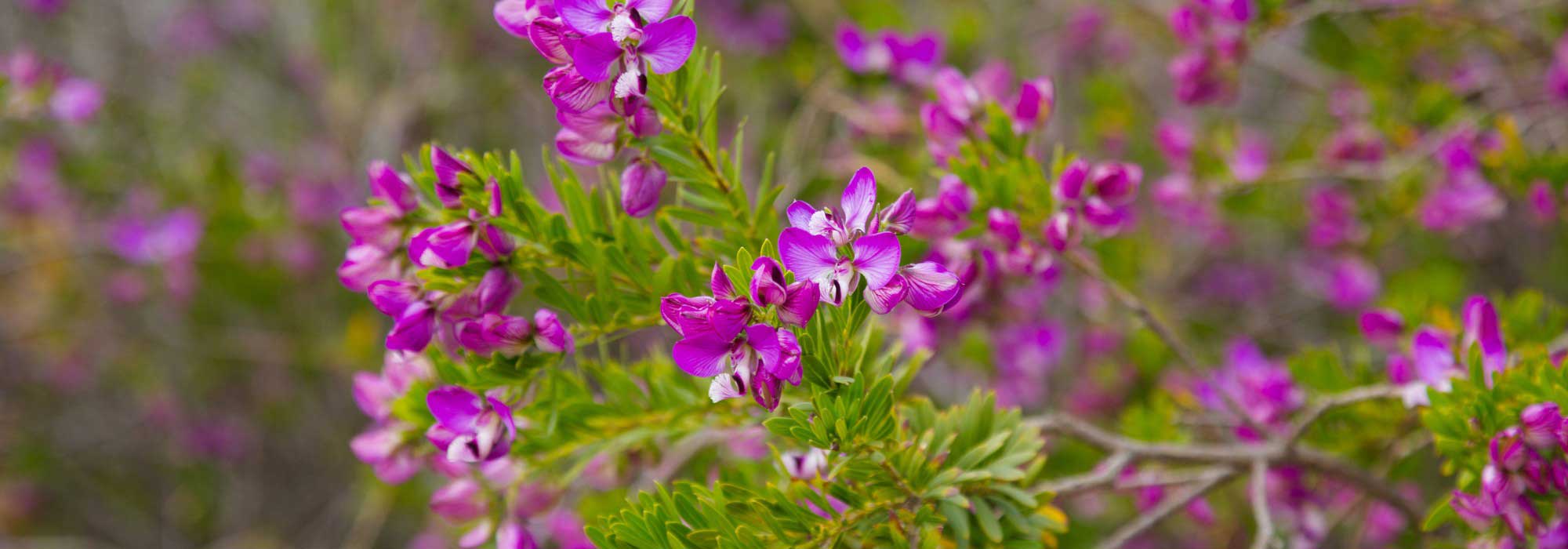
How to pair Polygala?
Our Finest Ideas for Incorporating It into the Garden or on a Terrace
Contents
The Polygala is a beautiful evergreen Mediterranean bush with mauve violet flowers, reminiscent of the typical pea flowers of the Fabaceae family. The most commonly cultivated is the Myrtle-leaved Milkwort (Polygala myrtifolia), a bush suited to mild climates (it cannot tolerate temperatures below -5°C), but there are also more compact and cold-hardy hybrids, such as Polygala ‘Bibi Pink’, hardy down to -12°C. There are also perennial species, like the Polygala chamaebuxus, a small alpine tapetum plant with purple-pink and yellow flowers. Polygalas are versatile in the garden, suitable for pots or borders, rockeries or flower beds. Discover 5 beautiful pairing ideas to suit your taste and garden style!
To learn all about growing Polygala, check out our complete guide: “Polygala: planting, pruning and care”
In a Mediterranean-style garden
The Polygala myrtifolia is a bush suited to mild climates, perfect for gardens with Mediterranean influences. As companion plants, consider aromatic varieties such as lavender, rosemary and helichrysum, alongside rockroses… For shrubs, incorporate background plantings like oleanders, pomegranates, fig trees and rockroses. You could train a bougainvillea against your house façade or over a pergola. In the foreground of the border, or between perennials and shrubs, add groundcover plants such as Corsican Spurge (Euphorbia myrsinites) and Delosperma. A majestic olive tree, with its nodose trunk and silvery foliage, would make the perfect focal point for this planting scheme.

Rockrose ‘Elfenbeinglanz’, Polygala myrtifolia, oleander, lavender (photo: Niepokój Zbigniew), Euphorbia myrsinites (photo: Guilhem Vellut) and olive tree
In a coastal garden
Polygala myrtifolia is resistant to sea spray and is particularly well-suited to coastal gardens, whether on the Atlantic coast or the Mediterranean basin. Plant it alongside majestic agaves, such as Agave americana ‘Variegata’, with its leaves beautifully edged in creamy yellow. For flowering companions, consider agapanthus, Armeria maritima, Eryngium maritimum, Limonium, and helichrysum. You can also incorporate ornamental grasses such as marram grass (Ammophila arenaria) and Lagurus ovatus, nicknamed Hare’s-tail grass for its ovoid, silky spikes. Discover the stunning Anthyllis barba-jovis, a Mediterranean shrub with finely cut silver foliage and pale yellow spring flowering. You can also create a windbreak hedge with tamarisk, which will delight with their delicate, airy pink flowering!
Feel free to consult our advice sheet “Creating a Coastal Garden”, as well as our selection of sea-spray-resistant perennials.
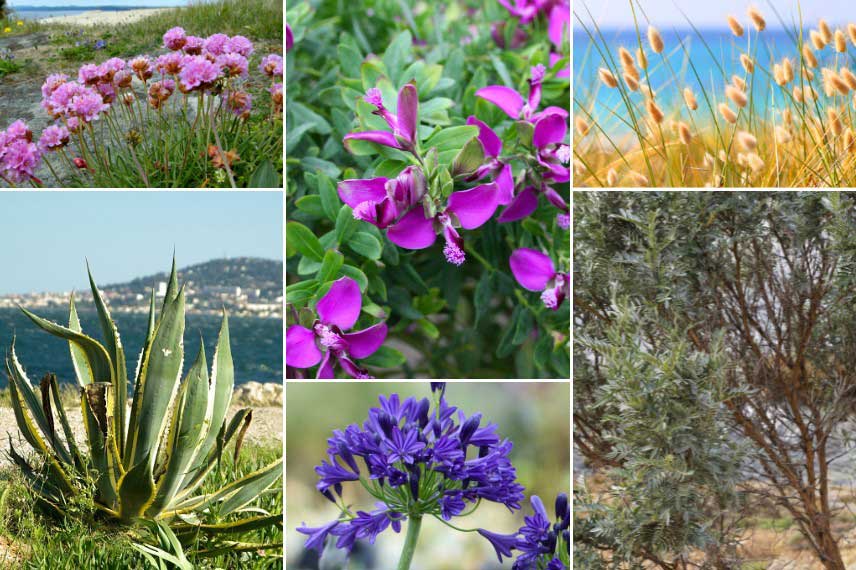
Armeria maritima (photo: Arnstein Rønning), Polygala myrtifolia, Lagurus ovatus, Agave americana, Agapanthus ‘Royal Velvet’, and Anthyllis barba-jovis
In an Australian garden
The Polygala myrtifolia is a bush native to South Africa. You can use it to create a strikingly exotic flowerbed by pairing it with other southern hemisphere plants, particularly those from Australia, New Zealand and South Africa. Structure your planting with the bold silhouettes of Cordylines, Dasylirion longissimum and Phormium tenax (we particularly recommend the variety ‘Pink Panther’, with its bronze and ruby-red foliage!). Alongside these, add plants with unusual flowers, mainly in warm tones of yellow, orange, red and purple. Consider, for example, Leucadendron, Anigozanthos flavidus, Berkheya purpurea, Watsonia, Crocosmias, Eucomis and Kniphofias.
Discover our advice sheet “Planting and growing southern hemisphere plants” as well as our inspiration page “Southern Exoticism”
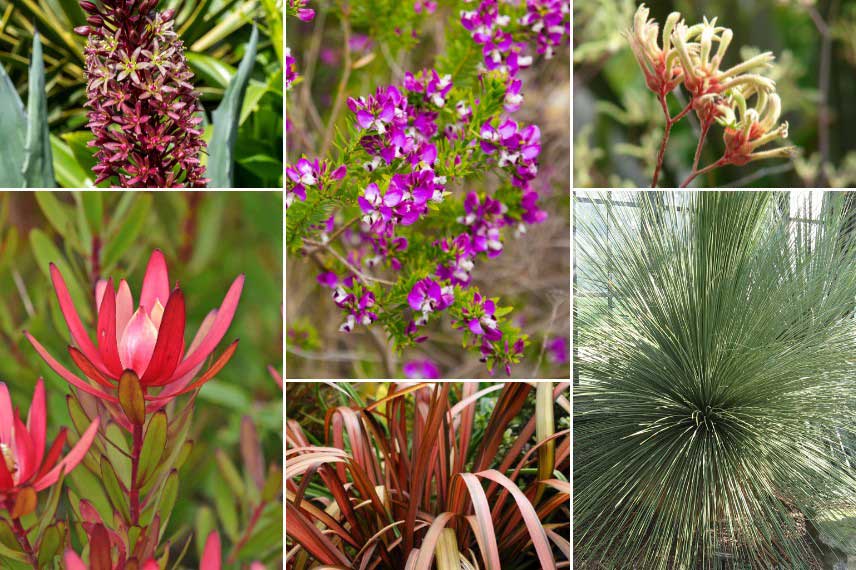
Eucomis comosa ‘Oakhurst’, Polygala myrtifolia, Anigozanthos flavidus (photo: Forest & Kim Starr), Leucadendron, Phormium ‘Pink Panther’ and Dasylirion longissimum
In a shady rock garden
The Polygala chamaebuxus ‘Grandiflora’ is a small perennial tapetum plant that thrives in shade or partial shade. Take advantage of it to green a slope in your garden or to create a rockery: choose a sloped or raised spot in shade or partial shade, and place large stones there to retain the soil. You can also mix gravel into the soil to improve drainage if needed. Between the stones, create small planting pockets where you’ll place the Polygala alongside saxifrages, tiarellas, bugles (Ajuga reptans), Geranium macrorrhizum… The mauve flowering of a Lamium maculatum will echo that of the Polygala. Complement these flowerings with the decorative foliage of ferns such as Coniogramme emeiensis, hart’s tongue fern or holly fern. Also incorporate a few clumps of ornamental grasses like Carex morrowii ‘Ice Dance’, with its very fine foliage, beautifully marginate with white.
Discover our advice sheet: “10 plants for creating a shaded rockery”
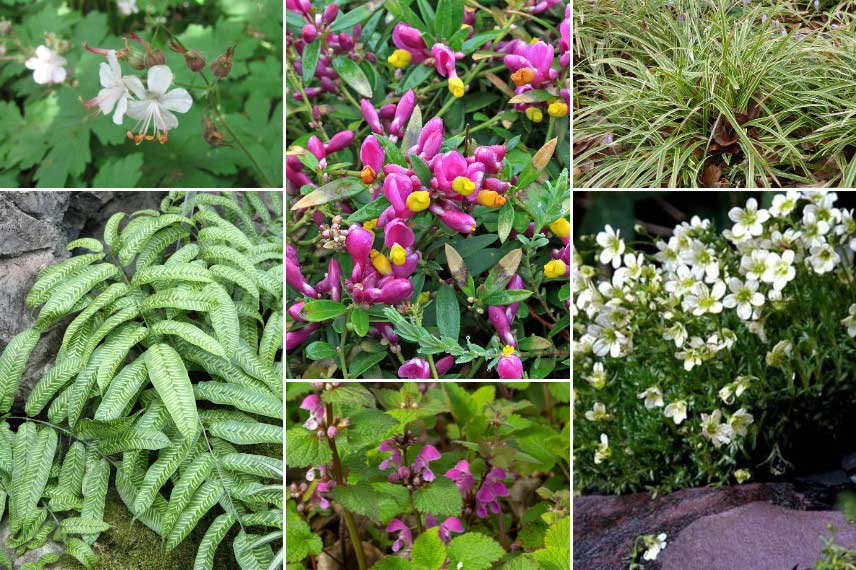
Geranium macrorrhizum ‘Spessart’, Polygala chamaebuxus, Carex morrowii ‘Ice Dance’, Coniogramme emeiensis, Lamium maculatum and Saxifraga ‘Pixie White’
In a pot on a terrace or balcony
As Polygala myrtifolia is not very hardy, in regions where temperatures regularly drop below -5°C in winter, the ideal solution is to grow it in a pot so it can easily be sheltered from the cold during winter. Plant it in an attractive terracotta or ceramic pot and place it on your terrace or balcony in spring once temperatures become milder. Create an exotic atmosphere with potted plants featuring lush foliage such as the dwarf palm Chamaerops humilis, Phormium tenax, or Choisya ternata… Add colour with the exuberant foliage of a Coleus and the delicate bell-shaped flowers of a Fuchsia. Enjoy the pleasant, fragrant flowering of a Gardenia. Don’t forget some majestic plants like Gloriosa superba ‘Rothschildiana’ and the Bird of Paradise, Strelitzia reginae.
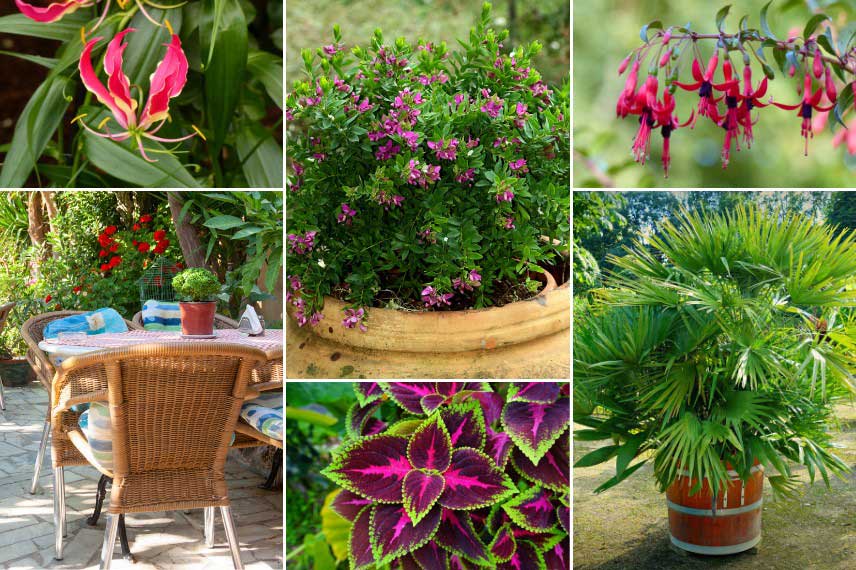
Gloriosa superba ‘Rothschildiana’, Polygala myrtifolia, Fuchsia regia ‘Reitzii’, Coleus and Chamaerops humilis
- Subscribe!
- Contents
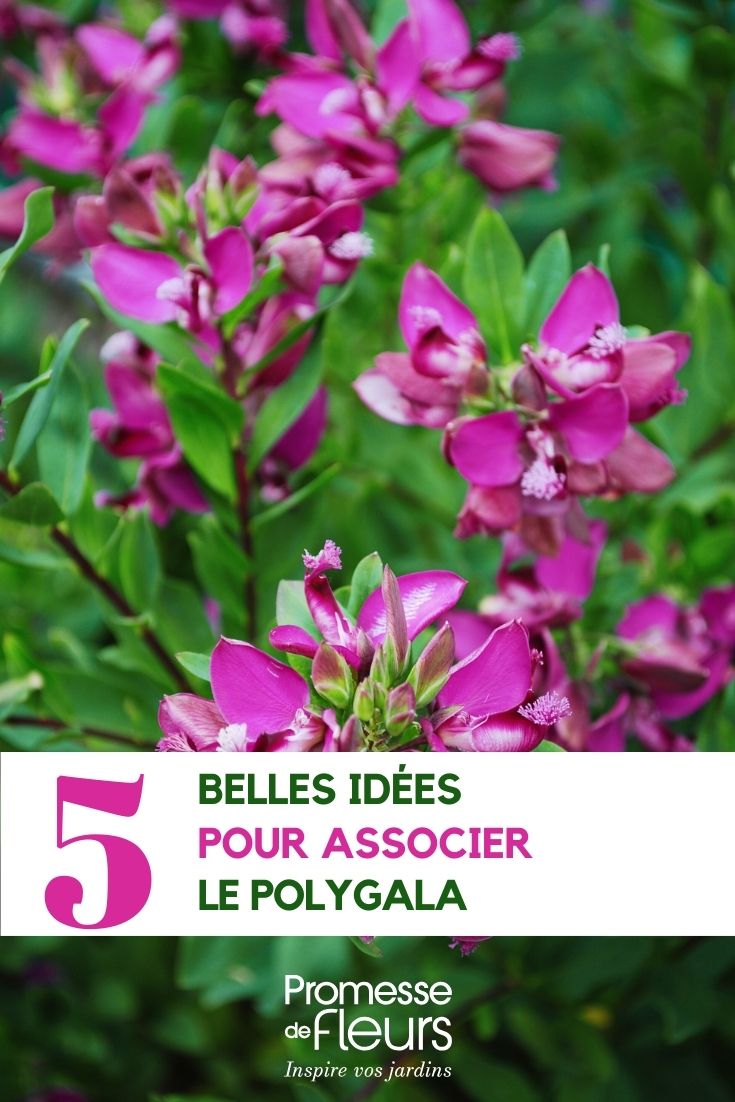































Comments